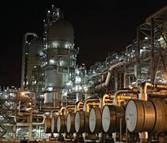Singapore shifts energy focus from refining to specialty chemicals
By ERIC YEP
Singapore, one of Asia's top refining centers, isn't actively seeking to expand its refining capacity, preferring instead to attract new energy-related investment into the specialty chemical sector, which isn't as crowded with competitors, according to Eugene Leong, director of energy and chemicals at the city-state's Economic Development Board.
Singapore is Asia's largest oil-trading hub and fifth-largest oil refiner, with the capacity to process 1.3 million bpd of crude oil. It previously showed an interest in expanding beyond the three refining complexes that are currently located on Jurong Island, to the south of Singapore proper, owned by Shell, ExxonMobil and Singapore Refining Co. -- a joint venture between Chevron and Singapore Petroleum, a unit of PetroChina. In 2010, Singapore-based oil trader Hin Leong Group submitted a proposal to build a 300,000-500,000-bpd refinery, the Energy Information Administration said on its website in March.
In 2010, Singapore-based oil trader Hin Leong Group submitted a proposal to build a 300,000-500,000-bpd refinery, the Energy Information Administration said on its website in March.
But these days, attracting new refinery projects isn't a "specific aim" of the EDB, a government agency that promotes Singapore as an investment destination, Mr. Leong told The Wall Street Journal.
"Our focus really is on upgrading existing assets so that they can be more competitive," he said, referring to a combination of upgrading units and building plants to produce value-added chemicals that are used to produce niche products such as paints and electronics.
According to Standard Chartered analyst Priya Balchandani, anyone considering building a new refinery in Singapore should carefully weigh the pros and cons: On one hand, the city-state is an established trading hub that could benefit from increased business that will be generated as the global economic recovery progresses, but on the other, a wave of oil-refining capacity expansions could diminish demand for Singapore's output.
In a report published late last year, Ms. Balchandani said she expected global crude-distillation capacity to increase by around 10 million bpd between 2013 and 2017, with Asia and the Middle East accounting for most of the growth.
Competition in traditional refining and petrochemical sectors is heating up in large part as a result of shifting export patterns, with regional governments investing in local fuel production facilities to reduce reliance on imports.
Major oil refiners in Asia have been able to derive strong profits from the price differences between crude oil and refined products over the past few years, but the addition of new plants in the region, especially in China and the Middle East, will put pressure on those price differences, or refining margins.
"We continue to hold a cautious view on the Asia refining sector on our assumption that refining margins will trend down this year to $7.00 a barrel, from $7.50-7.60 a barrel in 2011-12," analysts at Nomura said in a research note last week, citing overcapacity.
Rather than competing for narrowing margins, Singapore wants to increase the proportion of refined products that are processed into chemicals that can be sold at higher prices compared with "commodity chemicals" that are used in everyday plastics such as containers, bottles or bags.
Oil companies are on board, viewing Singapore as a "long-term strategic manufacturing site," and they expect to remain competitive through upgrades and specialty petrochemical products, Mr. Leong said.
The city-state's refining and chemicals sector accounted for around 42% of foreign capital investment in 2012, second only to electronics, according to the EDB. Foreign investment in the chemical sector rose to S$6.7 billion in 2012 from S$2.5 billion in 2011.
Bank of America Merrill Lynch last month estimated the specialty chemical market to be valued at around $100 billion in Asia, half of which is driven by demand from China and less than 10% from India, mainly in the construction, automobile, information technology and cosmetics industries.
The bank said most of this demand is met by companies in North America, Europe and Japan rather than domestic companies in consuming countries, as the Asian chemical industry is mostly skewed toward producing commodity chemicals.
Mr. Leong said he wasn't concerned that a glut of shale gas in the US will give a price advantage to American petrochemical plants that use ethane as a feedstock, as companies with operations in Singapore can offset the added cost of naphtha feedstock used to make petrochemicals by diversifying into specialty chemicals, vertically integrating their refining business, producing a different product slate and by being closer to Asian end users than their North American competitors.
Dow Jones Newswires






Comments